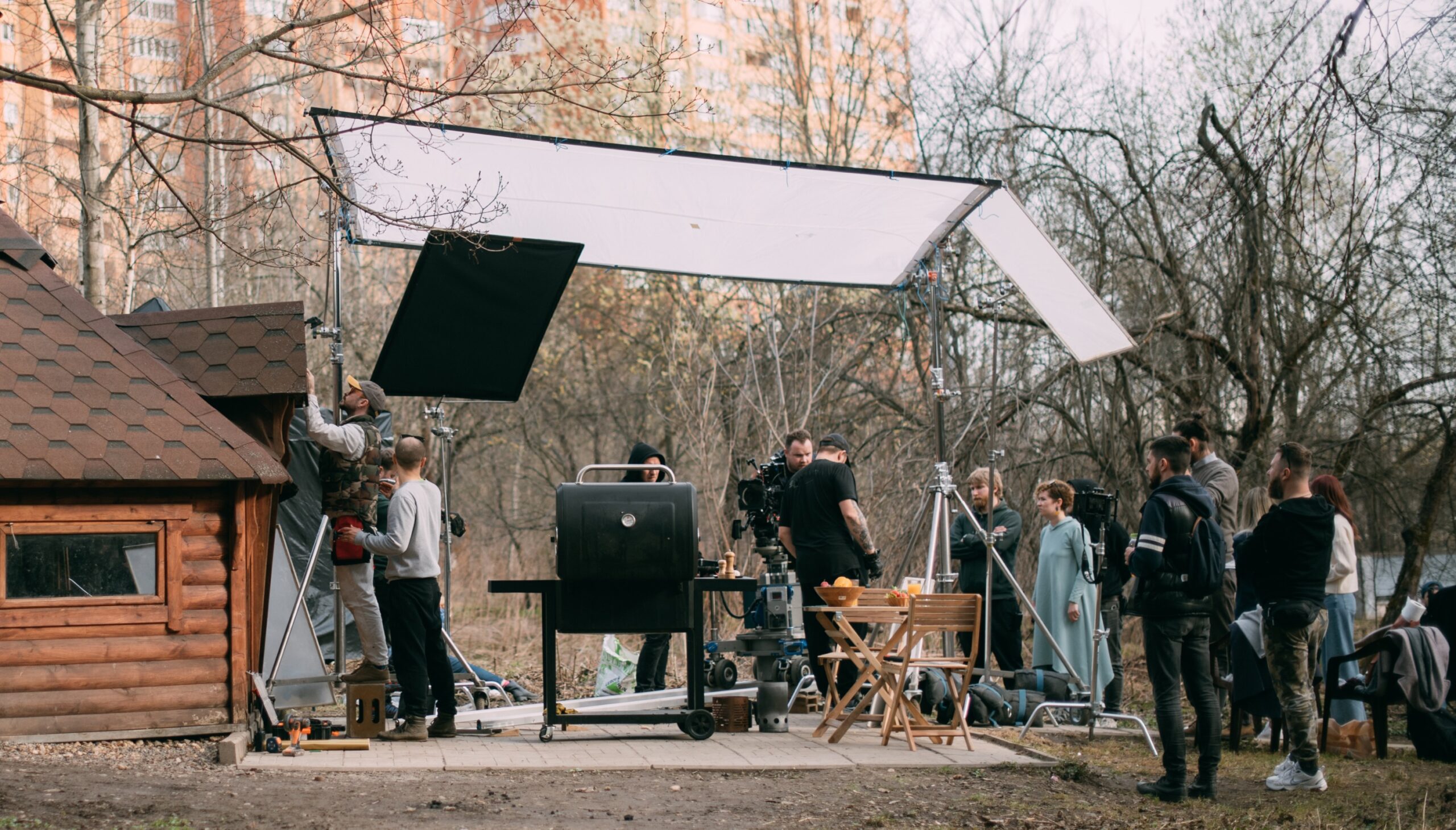Happy Earth Month! If you’ve considered a sustainable production before, but worry that it doesn’t fit your budget, we’re here to help. With the right tools, a little time and some strong communication, sustainable filmmaking can actually save you money.
A PEACHy a Day Keeps Climate Change Away
Sundance Collab is a member of the Green Film School Alliance (GFSA), which uses a tool called the PEACHy to track environmental actions. This is a great starting point to determine what actions you can take. You can download the PEACHy as an Excel spreadsheet.
The PEACHy is not only a great tool to plan and track how green your production is, but also serves as an application for the Environmental Media Association (EMA) Student Green Seal, which you are eligible for if you achieve 50 points or more. The application is free, as are the GFSA tools. Find out more about EMA and past recipients.
It is recommended to fill out the PEACHy twice, once in prep to determine your goals, and once after you wrap to identify how many goals you completed. Even if not everything on applies to the type of project you’re doing, it’s a great starting point to discuss what you and your team want to prioritize.
If you have room on your set for an additional crew member, the easiest way to stick to your on-set goals is to hire an Eco Rep whose whole job is to keep the set green. Have them handle waste management and put them in charge of answering questions about your green set – you’ll be busy shooting the film during that time! The good news is this can be any enthusiastic human being. After going through the PEACHy and resources outlined below, they will be set up for success. Being an Eco Rep is a great starting point for people newer to the industry who want to get on set experience. Since there is such a demand for them on studio productions, it’s a great resume item to help move to higher paid jobs. With that, let’s get into the steps you can take towards a greener production.
1. Everything starts with the story, including sustainability!
Think about your characters’ behaviors — are they modeling sustainable actions? Can they walk or ride a bike to get to their destination, or use an electric vehicle? Can your story take place in a sustainable environment? Think about what fits in naturally within the story you are telling, and find resources for greening your content here.
If you didn’t write the script, do a notes pass to determine any non-climate friendly items you might be able to get rid of without affecting the story and discuss it with the writer. For example, if you’re working in comedy, maybe there’s a funny replacement for one of the props or behaviors that could spark a joke.
2. Speaking of the script, do you really need to print it out?
In most cases, the answer is no. Apps like Scriptation and Studio Binder allow you to go paperless for scripts, sides, call sheets and schedules. Both offer free plans for getting started. Script Supervisor work can be done on an iPad. You can encourage your cast to bring devices they most likely already own to the table read. Finally, if you want to keep it simple, both Windows (Reader) and Macs (Preview) have built-in PDF viewing software that will allow you to do director prep digitally for free.
3. Communicate early and often
Speak to your department heads about your goals in prep, using the PEACHy as a guide to determine department specific actions. Once you’ve determined the production’s goals, make sure everyone is aware of them! Announce at the first production meeting that you’re aiming for a green set, explain how everyone can help, and set aside time for questions. Announce it again at the table read, and remind everyone to bring their water bottle and coffee tumbler to rehearsal so your cast gets used to it. Include sustainability reminders at the top of your call sheet below any safety precautions. Remind people of what to do in your daily call sheet emails – it can be helpful to highlight that portion in green for visibility!
For those who want to participate but haven’t worked on a green set before, NYU and GFSA have created a free one-hour sustainability course, which can be a very helpful tool for all crew members to watch and learn the importance of their actions. Register for free and share with your crew!
4. Manage your waste
Ideally, you will have three waste bins on your set: Trash, Recycling and Compost, and trash will be the smallest one! This is a helpful thing to mention in your call sheet emails, and you can explain in the morning safety meeting what goes where. Try to use recycled paper or cardboard for your signage. During prep, work with your Eco Rep to find a local compost drop-off (usually free) and have them do a run at the end of the day.
5. Consider your lighting plan
The biggest light source in the universe, the sun, happens to be free! Maybe you can plan to shoot outside in the summer and use reflector boards to adjust the lighting accordingly. If you need to rent lights, consider using a combination of sunlight and LED lights so you can tie into the power grid or use a battery-powered generator like a Voltstack. Eliminating fuel generators from your production has several advantages beyond clean energy. If you’re shooting somewhere dry like Los Angeles, fuel generators typically require hiring a fire marshal, which will cost your production thousands of dollars. Battery-powered generators are also very quiet, reducing noise pollution and allowing you to put them closer to the camera while avoiding extra cabling.
6. Go costume shopping in your actors’ closets
If you aren’t doing a period- or location-specific piece, many actors will feel more comfortable wearing their own clothes and it will save you time and money in fittings and alterations. Pick out their costumes in prep and make sure they turn them over to the production so they don’t forget them or get them dirty. If you’re on a SAG production, you can provide a stipend for this, which will still be significantly cheaper than purchasing materials and hiring a costume designer.
7. Rent your props instead of buying them
If you’re a film student and live in a production hub, a lot of prop houses offer student discounts. If not, you can most likely still get a multi-day discount. If you have to buy something, make sure to donate it when you’re done shooting. It can go to a crew member, a school’s prop room or a charity/thrift store.
8. Abolish single-use water bottles
This is one of the easiest, most significant things you can do on a low budget production and can help you avoid a Game of Thrones water bottle moment. When supplying single-use water bottles to everyone, a medium-sized crew shooting for a week can easily go through 1,000 water bottles! Have everyone bring their own water bottle and tumbler and tell them you will not be supplying water or cups. Rent a water dispenser with your production equipment and have several 5 gallon water bottles to get you through the day. You can refill them at many grocery stores or water stores — this will be significantly less expensive than buying flats. You can also provide bottles or tumblers with your film name or production company logo as a gift and encourage cast and crew to use it on their next shoot.
9. Reduce your vehicle emissions
The fewer vehicles being used, the fewer emissions going into the atmosphere. Make a carpool plan, encourage public transport if your set allows it, and offer to take props or crafty in your car so an additional van doesn’t need to be rented. If you need to rent a production truck, plan your pickups in geographical order over the course of one day and make sure your driver knows not to idle. Try using an app like Circuit or Road Warrior to help your transpo team plan their route.
10. Be green at lunch!
If the volume is high enough, some caterers will stay through lunch and provide reusable plates, utensils and serving dishes that they bring home. If that’s not possible, ask if they can use compostable/biodegradable packaging like sugarcane. Have your Eco Rep donate leftovers to food banks.
If you’re working with restaurants instead of a caterer, call them early on in the process and ask if they’d be willing to do a discounted catering rate if you book them for multiple days. Find out if they can provide biodegradable containers, if they source their seafood sustainably and confirm they have solid vegetarian and vegan options. These changes may increase your cost a little but should be offset by a catering discount. Cut red meat from the menu or plan a meatless Monday and share why you’re doing this with your cast and crew. Did you know the production of 2 pounds of red meat is the equivalent to driving an average car for 150 miles? Now you do!
Whether you take one or all of these steps in your next production, we hope we inspired you to think about a new way to do things. Every step helps along the way to sustainable filmmaking!
Learn more about sustainable filmmaking!
Join us live for free on April 25 for Advisor Studio: Climate Storytelling: How to promote sustainability from script to screen with Daniel Hinerfeld, Kat Coiro, Kimberly Burnick, Sam Enoch, and Sheila Morovati. Sundance Collab also has many curated resources devoted to sustainable filmmaking: check out the recording of our Creator Meetup: How to Run a Sustainable Film Production with Heidi Kindberg (HBO/HBO Max)



